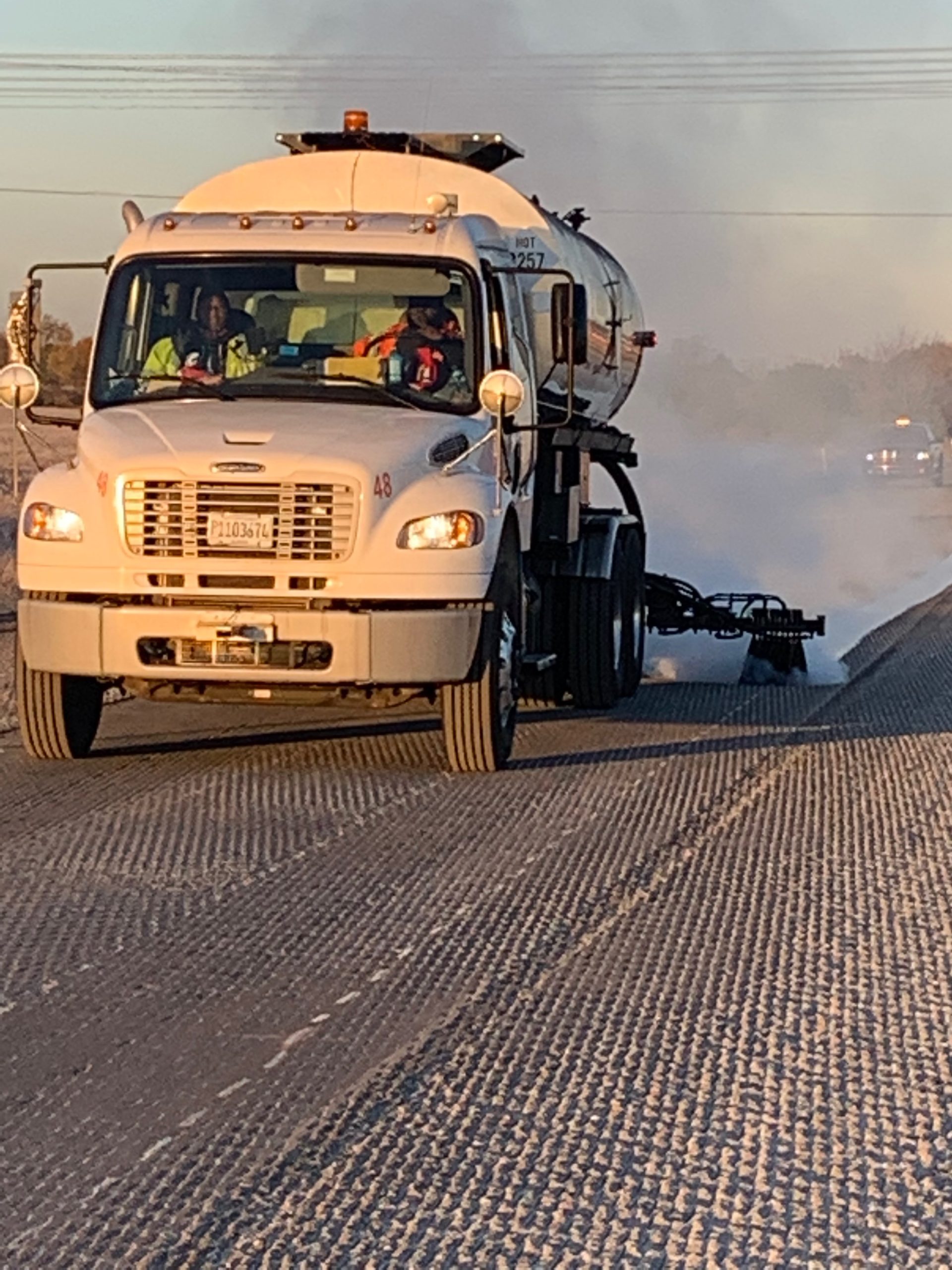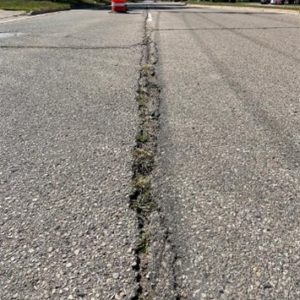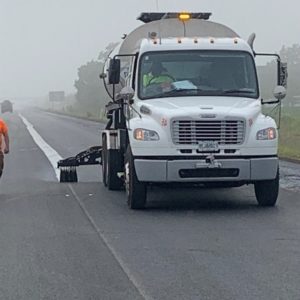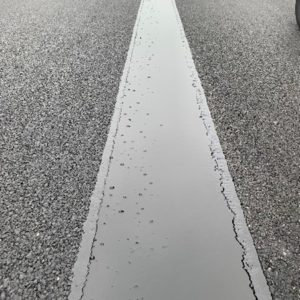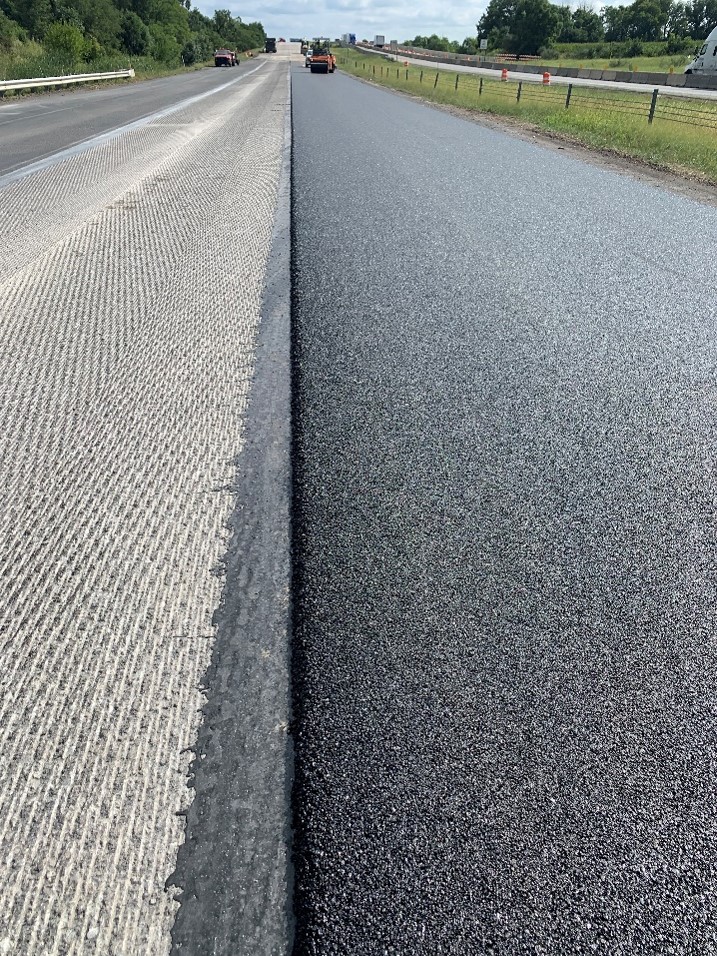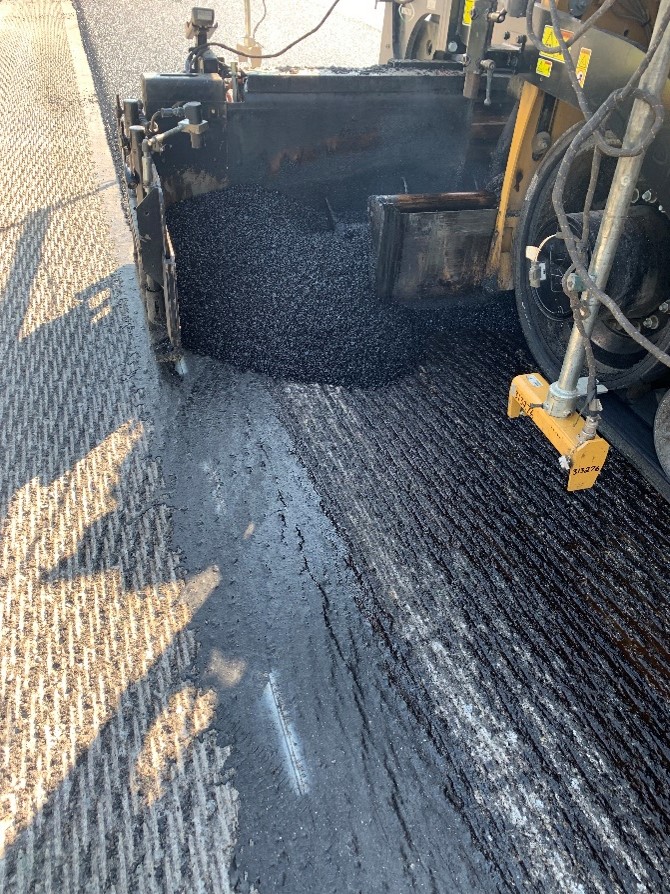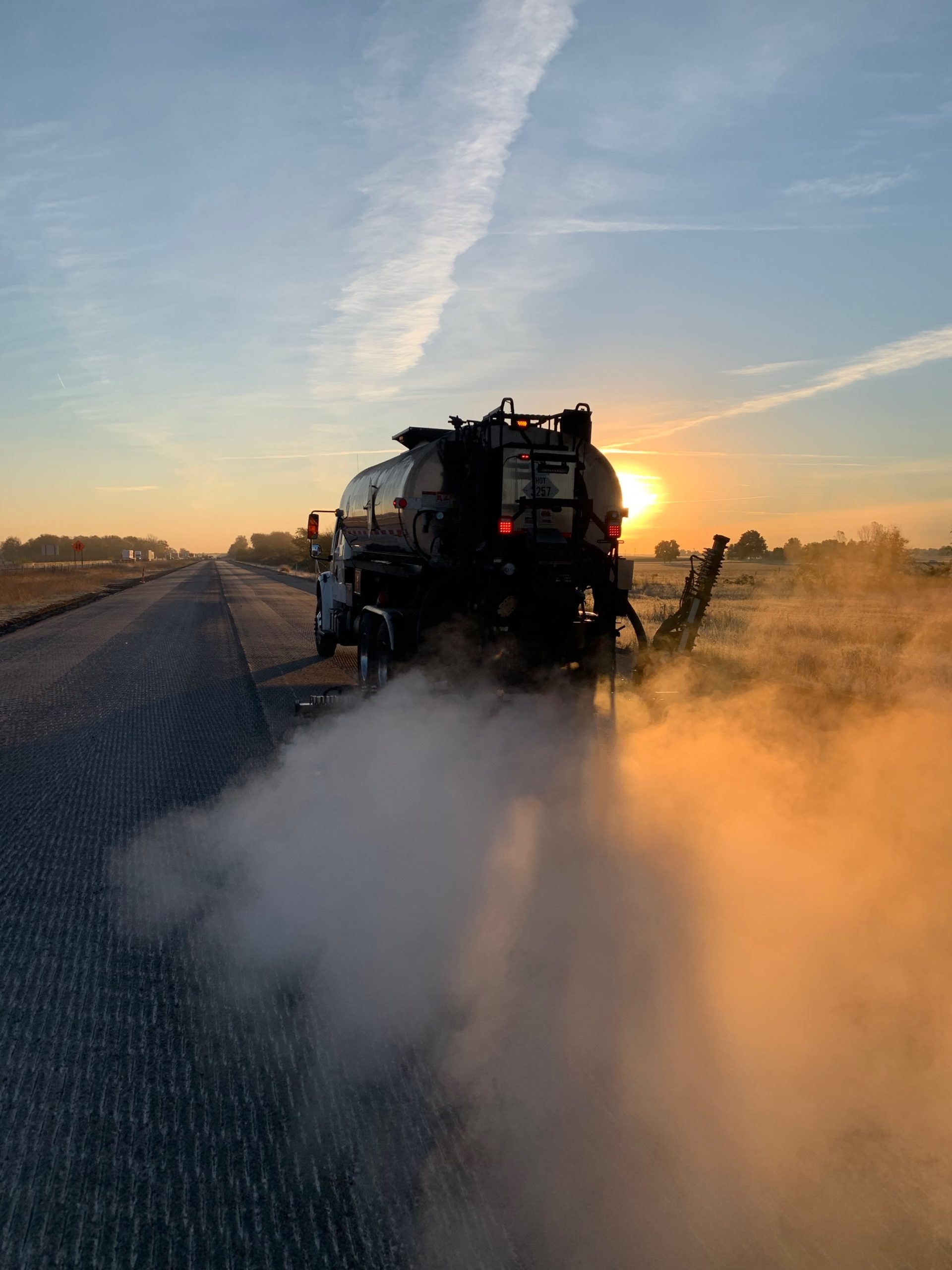Many states are looking for methods to improve longitudinal joint performance of their asphalt pavements since these joints often fail before the rest of the surface. The longitudinal joint is the middle of the road, or the seam where the two sides of the pavement come together.
With their inherently lower density, longitudinal joints fail by cracking, raveling and potholing because of the intrusion of air and water.
Due to their longitudinal joint issues, and after trying several less-than-successful traditional solutions, the Illinois Department of Transportation (IDOT) worked to help develop a concept to seal the longitudinal joint region. The uniqueness of this solution was to seal this joint from the bottom up. (1)
Interstate 70 in Hancock County
A recent project in Indiana was on both the east and westbound lanes of Interstate I-70 from State Road 109 interchange west for 69,500 lineal foot or 13.16 miles. A materials solution to help longitudinal joints, is call VRAM. This was applied on centerline and also on travel lane shoulders for westbound lanes.
VRAM application took place over three days due to rain. Average temperatures recorded during this time were ambient 69°F and the existing profile milled binder surface was 76°F. The width of VRAM application on this project was targeted for 18” wide.
What is VRAM and How Does it Work?
VRAM is a Void Reducing Asphalt Membrane. Prior to paving, VRAM material is sprayed on an 18” wide location directly under the area where the longitudinal joint will be located. (1) When the HMA is placed and compacted over VRAM, the material migrates upward into the fresh pavement. It fills voids to help ensure the joint is less permeable.
Paving Hot Mix Asphalt Over VRAM
Paving began at 10:00pm on Wednesday September 1st. Paving began with the travel lane at SR-109 interchange heading west. Milestone was paving the travel lane shoulder westbound lane in front of E/B paving, who was paving the binder lift. The ambient temp was 70°F and surface temperature was 78°F.
Paving train consisted of a CAT AP655F paver, HAMM HD +120i and a HAMM HD 90 steel drum rollers, 2 CAT CB10 rollers. Rolling pattern for the two breakdown rollers were 4 passes in vibratory mode on the upward pass and static in return pass and from low to high while the finish roller worked in static mode.
An American Innovation Discovered in Indiana and Illinois
Many believe that VRAM is the solution to the longitudinal joint problem. J-Band® is an American made VRAM, that was developed at the laboratories of Heritage Research Group in Indianapolis, Indiana. J-Band is applied during the road construction process just below the joint.
J-Band isn’t a new trend, although you could say it is trending. I has been used since 2002 on roads in Illinois with close collaboration with the Illinois Department of Transportation (IDOT).
How is Hancock County Building Longer-Lasting, Safer Roads?
J-Band has a proven track record of delivering longer road life and offers an impressive return on investment. An investment in protecting the longitudinal joint helps roads last up to five years longer and delivers a return on investment of three to five times its cost. (2)
If you are interested in learning how much your road network can save by using J-Band, you are encouraged to use the VRAM Interactive Calculator, found via the following link:
Calculator – J-Band (thejointsolution.com)
Asphalt Materials is a midwestern based company that has been involved in the asphalt business since 1956. Asphalt Materials is a proud member of The Heritage Group family of companies.
Notes and Sources:
- VRAM, Void Reducing Asphalt Membrane is referred to in Illinois as LJS, Longitudinal Joint Sealant. The typical VRAM application for centerline treatments is a width of 18”.
- TRB paper. https://journals.sagepub.com/doi/10.1177/03611981211044451

